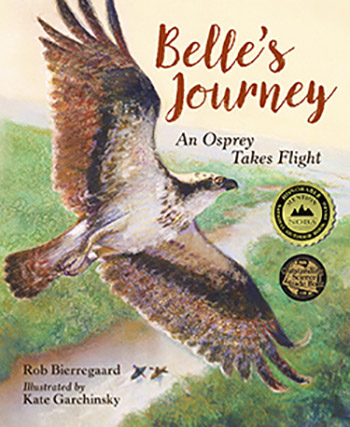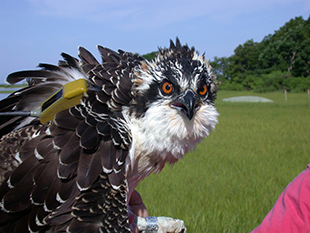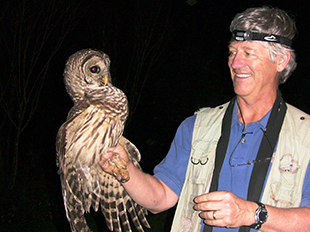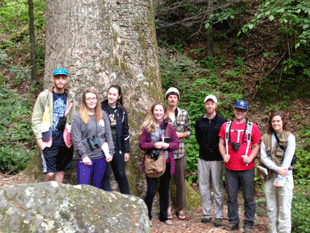
Ospreys - Migration and Population Trends

Barred Owls in the NC Piedmont

Ornithology in the Classroom and Field

Way back in 2013, while waiting for a young Osprey to reappear at its nest, a friend suggested that I write a book about my favorite Osprey. It didn't take long for the seed of an idea to germinate, and about 5 months later, more or less to my own surprise, I had written a book.
Belle's Journey tells the tale of a young Osprey I tagged at her nest on Martha's Vineyard in 2013. The travels of "Story Belle" to Brazil and back is a composite of four different young Ospreys from Martha's Vineyard, but most of the story is based on "Real Belle," and everything that happens in the book happened to one of our satellite-tagged birds. Read more about the bird and the book.
I have been studying Ospreys in southern New England since 1971. Beginning in 1998 I restarted an intensive census of the population on Martha's Vineyard. In 2017 we completed the 20th survey of the island's Ospreys. The population is now over 90 pairs. Quite a jump from the 2 pairs that were on the Vineyard back in 1971.
Beginning in 2000, I started tagging Ospreys with satellite transmitters that enable us to follow their movements near their nests and their migration to South America and back. Most of this work has been on Martha's Vineyard, but I have tagged Ospreys from South Carolina to Newfoundland. Read more...
For over a decade, my graduate students and I studied the thriving population of Barred Owls that live in the Charlotte suburbs and surrounding countryside. A remarkable 300 pairs of Barred Owls live within 10 miles of downtown Charlotte.
My graduate students and I, along with a small flock of undergrads, followed as many as 25 pairs of owls each spring and summer. We tracked dozens of owls to measure their home ranges and installed video cameras in nest boxes and recorded the delivery of over 1,600 prey items.
I've migrated most of the old UNCC website to this page. Not all the links work, but the basics are here.
From 1998 to 2011 I taught Ornithology at the University of North Carolina at Charlotte.
In 2002 I began teaching a 2-week intensive field Ornithology course at the Highlands Biological Station in the Smoky Mountains of western North Carolina. This course every other year in mid May or early June.¨
The course took a COVID-related hiatus in 2020, but resumed in 2021 and will be back for 2023.
It is open to college students needing elective credits, rising graduate students, high-school teachers needing continuting education credits, and adult learners.